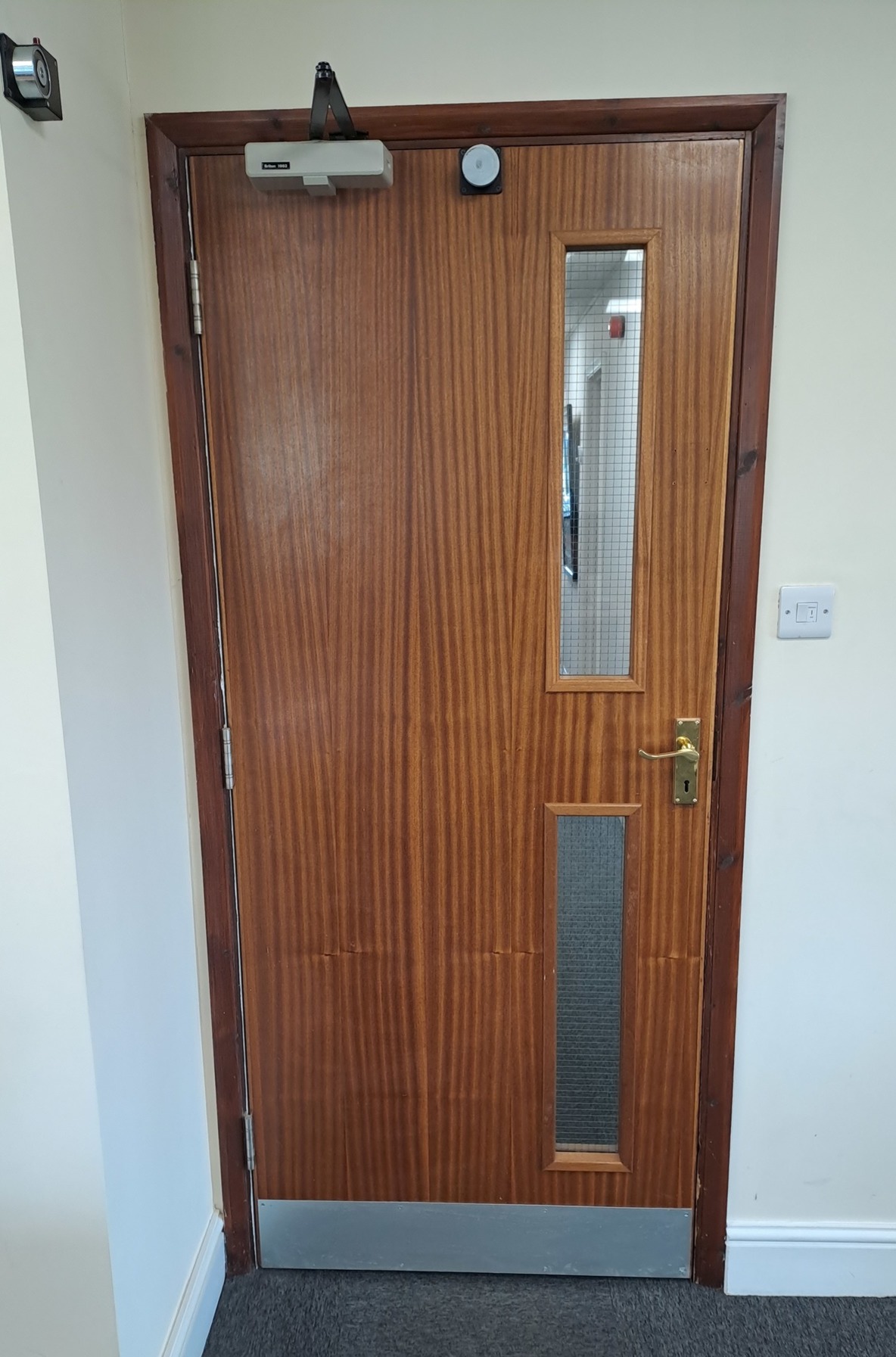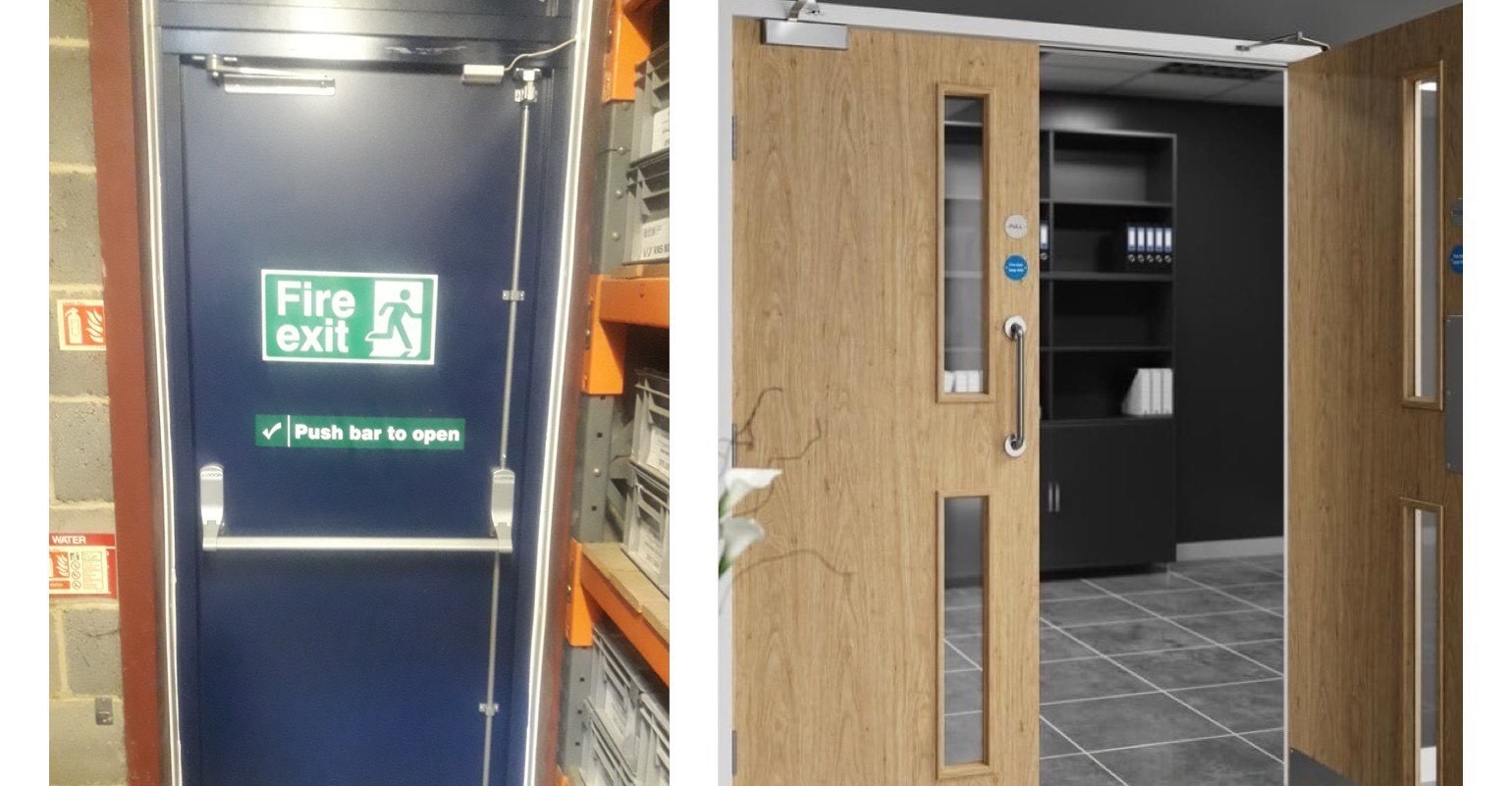What is the difference between a fire exit door and a fire door?
Posted on 13th July 2023 at 15:56
On the surface, they sound the same don’t they. I mean both include the word ‘fire’ and ‘door’ so they must the same, right? Wrong. There is actually quite the difference between them as each have their own specific purpose and uses within a structure. So, let’s have a closer look at these doors and what makes them so effective at their respective jobs.
1. What is a fire exit door?
Most people will be familiar with a fire exit door. These allow people to escape from a building in the event of a fire and can also be referred to as emergency exit doors or fire escape doors. Having these doors in place (and maintaining regular records and checks of their effectiveness) are critical for keeping your employees and members of the public safe when inside your premises. Always opening outwards (you can find out why here), they are usually equipped with a push bar or push pad to ensure that it opens easily and quickly in the case of an emergency.
2. What is a fire door?
Fire exit doors are not usually fireproof however a fire door must be able to withstand the heat of the flames. This is because a fire door is an internal door which is designed to stop the spread of fire from room to room. Their main purpose is to limit the amount of damage that a fire can cause, create more time for a safe evacuation and allow more time for the emergency services to attend and put it out.
Although all fire doors can withstand fire, their fire rating decides how long they can do this effectively. Some doors can withstand fire for an hour whilst others can contain the fire for up to four hours.
3. Why are fire exit doors and fire doors important?
Make no mistake. Fire can and does kill. Such as in the Sunderland disaster in 1883 where more than 180 children died due to a locked door at the bottom of a stairwell or in 1951 when a fire broke out in a clothing factory and there were not enough exits available. In the ensuing panic, 49 workers sadly lost their lives. If a building does not have an adequate escape route and the fire exit doors are not operational in an emergency, the consequences can be fatal.
Similarly, a fire door can and does save both lives and property, however, it is only effective if it is shut when a fire is detected. An open fire door cannot perform its function so it is very important that you make sure that your fire doors are not left propped open or, if they are open to allow pedestrian access, that the activation of the fire alarm causes them to close automatically.
4. How can I make sure my fire exit doors are compliant with current legislation?
The size and height of your building as well as the amount of people that will be using it will affect the number of fire exit doors that you will need. In addition, all doors on the escape routes leading to those doors must be easy to open without needing a key. They must be in an easy to access, permanent location and lead to a safe area which people can head to in the case of an emergency. They must be regularly maintained, marked clearly by emergency exit lights and remain well-lit – even in a power cut. Routes and exits should never be blocked from the inside or the outside, and combustible items (which could help spread the fire) should never be left in corridors or on stairways.
5. How can I make my external fire exit doors more secure?
Ultimately, fire exit doors are an exit. That means they open onto the outside. This could pose a security risk so it is important that they are made from strong yet light materials which makes them secure from attempted outside entry by intruders but also easy to open from the inside.
To add more peace of mind, you can install alarms to your fire exits so that it can only be used in an emergency or even electromagnetic locks although theses should be able to be overridden in the case of an emergency.
Stanair provides steel fire exit doors in single or double leaf. These are very strong due to their zinc-coated folded steel construction; reinforced hinge edges; welded thick steel-reinforced channels to the bottom edges; and high tensile steel reinforced lock points. Our range of fire exit doors offer excellent security to protect from intruders as well as providing you with optimal safety in the event of an emergency.
Finally…
To learn more about our range of fire products including fire exits, fire doors, fire shutters and panic hardware, do call our friendly team for a no obligation quote and site visit. Our experienced and knowledgeable surveyors will be able to assess your current provisions and suggest the best ways forward for you and your business.
Call us now on 01536 482187 to arrange your free quote today.

A fire exit door equipped with panic hardware to ensure easy access in the case of an emergency

A reinforced steel fire exit door installed by Stanair at a premises in Buckinghamshire.

An internal fire door at an office in Kettering. This one is connected to the fire alarm and closes automatically on the alarm being activated.
Tagged as: Fire exit door, fire door, security door
Share this post:




